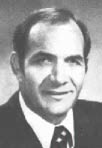''You Really Oughta Wanna''
Many orthodontists have a misconception about the motivation of patients. They view motivation as nothing more than successfully encouraging patients to do something we know to be good for them. They feel that if the motivator supplies enough accurate information and positive emotion, the patient's behavior will change.
Unfortunately, those who use this traditional approach report equivocal results at best. When patients fail to respond to repeated requests and motivational chats about wearing their headgear and rubber bands or about brushing their teeth more effectively, orthodontists frequently resort to the time-honored incantation, "You really oughta wanna".
Rather than trying to figure out why patients don't wanna, it might be more productive to ask why they should wanna.
The traditional theory of motivation and behavior is derived largely from the Freudian medical model, which says behavioral problems are outward symptoms of inner conflicts and frustrations. We now know orthodontic behaviors can stem from any number of psychological or physiological roots. But the medical model requires the orthodontist to discover the "true cause", explain it to the patient, and then wait for the patient to understand, develop will power, and change.
It might simplify things to look at the problem of noncooperation in strictly behavioristic terms, because this makes us view cooperation from the patient's point of view. Behaviorists believe that behavior is dictated by its consequences, and that consequences can be either positive or negative. They also assume that learning is quicker and more efficient when the consequences are positive and immediate.
Some of the immediate consequences of orthodontic treatment are that the patient is discomforted, inconvenienced, and socially handicapped. The real wonder is that patients cooperate at all. Certainly there are therapeutic benefits for cooperation: treatment will progress faster and braces will come off sooner, gums will be healthier, and there will be fewer cavities. In the case of an openended fee, it will cost them less if patients do as instructed. The only problem is most of these reasons relate to the distant future and have little immediate relevance to the patient--particularly if the patient isn't footing the bill.
When patients loosen brackets and bands, many orthodontists accuse them of eating hard, forbidden foods. Usually the patients say their brackets came loose when they were eating Jello. And maybe they did. What they don't say is that they had tugged on the brackets for several hours before eating the Jello. The relief patients get by loosening their brackets is so great and so immediate, it guarantees the behavior will be repeated whenever the braces are uncomfortable. This is why noncompliant behavior is frequently chronic.
There are several things we can do to interrupt this discomfort-noncooperation cycle:
1. Make the patient aware that fingers in the mouth are a prelude to picking at the appliances.
2. Deliver less discomfort with our appliances by using the lightest forces possible.
3. Supply patients with analgesic relief when they need it (after consulting their physicians).
Patients who habitually neglect oral hygiene also present a first-class motivational problem. These patients typically have plaque of many days' duration, and highly inflamed gums that bleed upon slight provocation. Insisting such patients brush with the force and diligence compatible with good oral hygiene is counterproductive, because brushing punishes their inflamed and sensitive gingivae so much that they avoid it. Every time they brush poorly, they receive the immediate reinforcement of not hurting. And this guarantees the behavior will be repeated.
However, there are also some steps we can take to help these patients:
1. Perform thorough and frequent prophylaxes.
2. Prescribe systemic and locally applied antibiotics (again, after consulting the patients' physicians).
3. Instruct them in a nonpainful but effective toothbrushing technique.
Many orthodontists become discouraged about patient motivation because they expect the patient to do what is positively reinforcing for the orthodontist, rather than for the patient. This is an unrealistic expectation and isn't likely to be successful.
The key to motivating orthodontic patients lies in looking at treatment from their standpoint and designing plans that coincide with their esthetic expectations, physiologic limits, and functional necessities. This isn't an easy task, because of the variability of human physiology and personality. It also requires us to learn much more about our patients than we have heretofore believed necessary. But until we make such a conceptual change, we may continue to be surprised when patients don't wanna.


